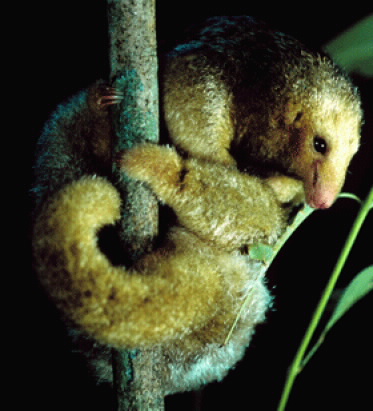Media Releases
Growing threats to biodiversity arks

Silky anteater from Barro Colorado Island, Panama – a small island, just 1500 hectares in area, and one of the tropical protected areas evaluated in this study.
(photo © Christian Ziegler, Smithsonian Tropical Research Institute).
Many of the world’s tropical protected areas are struggling to sustain their biodiversity, according to a study by more than 200 scientists from around the world, published in Nature.
“These reserves are like arks for biodiversity,” said Professor William Laurance, from James Cook University and the Smithsonian Tropical Research Institute in Panama.
“But some of the arks are in danger of sinking,” he said. “Even though they are our best hope to sustain tropical forests and their amazing biodiversity in perpetuity.”
Professor Laurance and his team studied more than 30 different categories of species – from trees and butterflies to primates and large predators – within protected areas across the tropical Americas, Africa and Asia-Pacific.
They estimated how these groups had changed in numbers over the past two to three decades, while identifying environmental changes that might threaten the reserves.
Professor Laurance said their conclusion was that while most reserves were helping to protect the forests, about half were struggling to sustain their original biodiversity.
“The scariest thing about our findings is just how widespread the declines of species are in the suffering reserves,” said Carolina Useche of the Humboldt Institute in Colombia,
“It’s not just a few groups that are hurting, but an alarmingly wide array of species,” she said.
These included big predators and other large-bodied animals, many primates, old-growth trees, and stream-dwelling fish and amphibians, among others.
The researchers found that reserves that were suffering most were those that were poorly protected and suffered encroachment from illegal colonists, hunters and loggers.
Kadiri Serge Bobo of the University of Dschang in Cameroon, Africa, said that it was not just what was happening inside a reserve that was important.
“Almost as important is what’s going on outside the reserve,” he said.
“Eighty-five per cent of the reserves we studied lost some nearby forest cover over the past two to three decades,” Dr Bobo said. “But only two per cent saw an increase in surrounding forest.”
Deforestation is advancing rapidly in tropical nations and most reserves are losing some or all of their surrounding forest.
The team found many nature reserves acted like mirrors – partially reflecting the threats and changes in their surrounding landscapes.
“For example, if a park has a lot of fires and illegal mining around it, those same threats can also penetrate inside it, to some degree,” Ms Useche said.
The bottom line, the researchers say, is that a better job needs to be done in protecting the protected areas – and that means fighting both their internal and external threats, and building support for protected areas among local communities. Such efforts will help ensure protected areas are more resilient to future threats such as climate change.
“We have no choice,” Professor Laurance said. “Tropical forests are the biologically richest real estate on the planet, and a lot of that biodiversity will vanish without good protected areas.”
Issued: July 26, 2012
JCU Media Liaison, Jim O’Brien 07 4781 4822